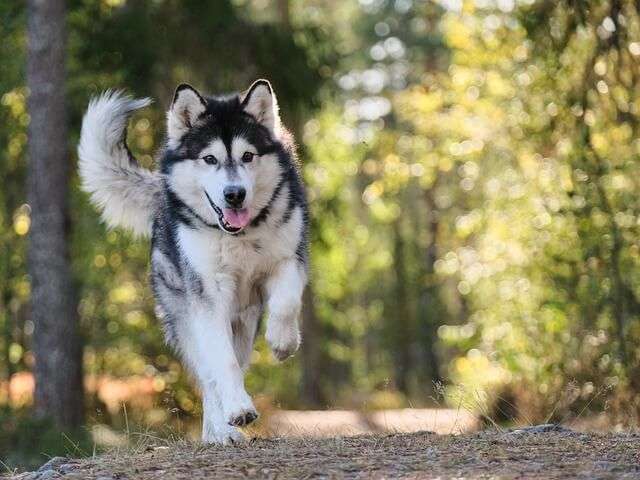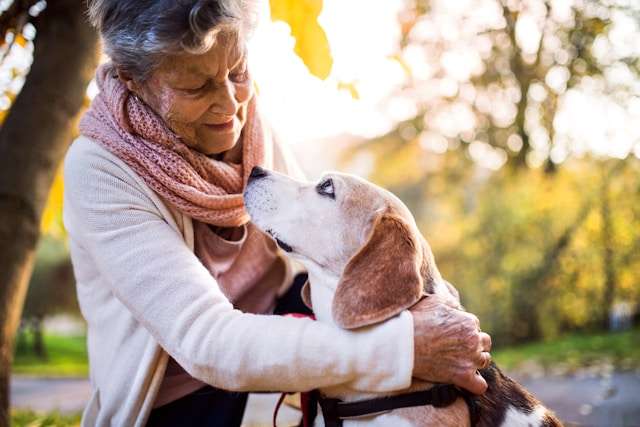Can Dogs Detect Your Emotions?
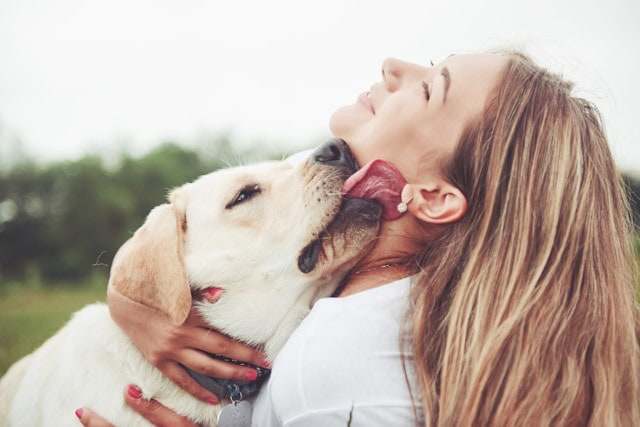
Can Dogs Detect Your Emotions? Understanding Canine Emotional Intelligence and Bonding. Ever wonder if your dog picks up on how you feel?
The answer is yes—dogs can detect your emotions, often more accurately than you think.
As a dog owner and proud companion to Savannah, I’ve seen firsthand how a dog’s ability to read feelings shapes our bond and training journey.
Understanding canine emotional intelligence isn’t just interesting; it’s a true game-changer for anyone who wants better training results or a happier pet.
This insight can guide your approach to dog food choices, dog obedience training, and even help you select the right dog breeds for your lifestyle. You’ll also find honest dog food reviews and practical ideas for online dog training, all built on respect for the unique bond between person and pup.
Knowing how dogs like Savannah connect to human emotions unlocks a new level of partnership and wellbeing for both of you.
Table of Contents
Key Takeaways
If you’re asking, “can dogs detect your emotions?”—the short answer is yes, and the research is fascinating. As a dog parent to Savannah, I see proof of it each day. Science backs up those gut feelings we get when our pups snuggle close on tough days or celebrate alongside us with tail wags during our happy moments.
Let’s break down what you really need to remember.
Dogs Truly Sense and Respond to Human Emotions
 Photo by Maksim Goncharenok
Photo by Maksim Goncharenok
Dogs don’t just guess how we feel—research proves they pick up on our moods and use that information in their own choices. When I’m feeling anxious, Savannah’s behavior shifts. She’ll stay closer, make more eye contact, and often slow her pace around me.
Researchers have shown dogs can read facial expressions, tone of voice, and even our body language. According to a 2022 study, dogs are able to functionally use emotional signals from people to guide their own actions, like choosing who to approach or when to comfort us (dogs functionally respond to and use emotional information).
Your Emotions Can Impact Dog Obedience Training
The way I feel during dog obedience training with Savannah matters—a lot. Dogs are smart at reading us. If I’m tense, Savannah picks up on it and becomes uncertain. If I’m upbeat and patient, she responds better and learns faster.
This reminds me that for the most effective online dog training, managing our emotional state may be just as important as REWARDING good behavior.
The Right Dog Food Supports Emotional Bonding
What you feed your dog isn’t just about nutrition; it can influence their mood and wellbeing. A healthy, happy Savannah is more connected and eager to please. Picking the right dog food, paying attention to dog food reviews, and making positive food choices can play a role in forming that emotional bridge between you and your pet.
Dog Breeds Vary in Their Sensitivity
Some dog breeds are more tuned in to human feelings than others. From working with Savannah and other pups, I see herding and companion breeds, in particular, act almost like emotional barometers in the home. If you’re looking for a deeply intuitive pet, consider breed traits alongside energy level and lifestyle fit.
Training is Personal, for Both Dog and Owner
Every relationship is unique. At K9 Nut, LLC, they believe a personal approach to dog trainig can turn emotional understanding into better behavior and stronger bonds. By paying attention to your mood, your dog’s reactions, and creating routines together, you unlock the real power behind “can dogs detect your emotions.”
For a deeper dive into the science, the American Kennel Club explains how dogs combine sound and sight to interpret what you’re feeling in their article, Your Dog Can Hear Your Emotions, Research Shows.
With the right mix of awareness, feeding, and training, our canine companions—like Savannah—prove every day just how much heart they bring into our lives.
The Science Behind Dogs Detecting Human Emotions
Can dogs detect your emotions? Absolutely, and science makes it clear these abilities aren’t magic—they’re rooted in biology. By understanding how dogs “read” us, I can see why Savannah always knows just when I need a tail wag or a gentle nudge. Here’s what’s happening behind the scenes when your dog tunes in to your mood.
How Dogs Use Senses to Decode Our Feelings
 Photo by Chris Duan
Photo by Chris Duan
Dogs have powerful noses—up to 100,000 times more sensitive than ours. When I’m anxious or excited, my scent changes without me even noticing. Savannah, on the other hand, picks it up instantly. Our bodies release different chemicals depending on how we feel. For example, fear or stress releases adrenaline and other hormones that dogs can smell.
Dogs’ ears are just as impressive. They hear subtle shifts in our voices, like a slight tremble or a higher pitch when I’m upset. Savannah often pauses and tilts her head whenever I use a softer tone or sigh, showing she’s tuned in.
Some dogs notice when we’re quiet for too long and will come over, nuzzle, or rest their heads in our laps.
Here’s how dogs decode our emotions:
- Smell: Detects hormones linked with stress, happiness, or sadness.
- Hearing: Responds to voice pitch, volume, and cadence.
- Vision: Observes body language, facial expressions, and gestures.
Research suggests that our dogs react not only to how we look but also to what they smell and hear, creating a full picture of our mood. If you want to know more, this article from Freshpet, “Can Dogs Sense Human Emotions?,” breaks down how sight, smell, and hearing all play a role.
These abilities also influence training. If my mood is off during dog obedience training, Savannah senses it quickly, making the session less productive. Staying upbeat and calm is just as important as using the right techniques and treats.
Using online dog training tools can help me track my approach and adjust as needed so Savannah always feels supported.
How Breed Differences Influence Canine Empathy
Not every dog responds to emotions the same way. Breed plays a big part. While all dogs can sense some level of human emotion, certain breeds seem almost tailor-made for it. For instance, I’ve noticed herding breeds and many companion dogs lock onto feelings quickly and respond in nurturing, attentive ways.
Some breeds—like Golden Retrievers, Cavaliers, and Poodles—are famous for their empathy. The Always Pets guide to breeds that sense emotions lists some of the best at reading people’s feelings. These breeds often shine in homes needing therapy or emotional support animals.
Take Akita dogs as another example. They’re loyal and observant with strong bonds to their families. If you’re curious just how unique the Akita’s empathy can be, my article on Fascinating Akita Dog Facts highlights their knack for reading the room and sticking close to their people during emotional ups and downs.
When you look at different dog breeds, their ability to pick up on feelings can influence everything from daily life to dog food choices, dog food reviews, and even how you approach dog trainig. Picking the breed that fits your emotional needs means you’ll both feel understood and supported.
Some pups like Savannah have fine-tuned their senses to suit my routine and moods. Other breeds might rely more on visual cues or desire structure and training. No matter which breed you choose, dogs truly aim to keep our spirits in check—one nuzzle at a time.
The Role of Training in Enhancing Your Dog’s Emotional Awareness
Dog training shapes more than obedience—it lays the foundation for emotional connection between dogs and their humans. For me and Savannah, training has turned signals into a shared language. When I focus on the training process, I see just how much dogs pick up from us.
My mood, tone, and actions all create an environment for emotional growth, building trust and understanding that lasts a lifetime.
Why Dog Obedience Training Strengthens the Human-Canine Bond
Dog obedience training is much more than teaching sit, stay, or come. It’s about real communication. When I work with Savannah, she learns how my emotional cues shape her world. By consistently reinforcing calm behavior and celebrating her progress, I help her tune in to my state of mind.
Here’s how obedience training boosts emotional awareness in dogs:
- Consistency builds security. Dogs thrive when they know what to expect. Routine training gives Savannah clear rules, making her feel safe and confident.
- Positive reinforcement ties emotion to learning. Dogs quickly connect happy emotions—like praise, treats, or play—to positive actions. This deepens the bond and encourages them to check in with us for cues.
- Structured sessions create space for empathy. When I’m patient, Savannah mirrors that calmness. She knows when I’m relaxed or tense, and her responses adjust accordingly.
Try these actionable tips in your own training:
- Match your mood to the goal. If you want your dog to learn a new skill, approach it with patience and enthusiasm.
- Reward emotional awareness. If your dog offers comfort or attention when you’re sad or happy, praise them—this strengthens emotional understanding.
- Keep sessions short and frequent. Short bursts keep training fun and less stressful for both of you.
When your dog feels supported and understood, trust grows. Training with emotional cues at the forefront makes obedience smoother and your relationship healthier. It’s not just about skills—it’s about creating a partnership where both you and your pup feel truly seen.
For more tips on improving your pup’s nourishment, explore this Puppy nutrition guide to help keep your dog healthy and emotionally balanced.
Utilizing Online Dog Training to Support Emotional Communication
Online dog training makes supporting your dog’s emotional development flexible and personal. For me and Savannah, digital training means we can learn and practice wherever we are—at home, in the park, or traveling.
These platforms often use videos, tutorials, and live feedback so that both people and dogs can read and respond to emotions in real time.
Benefits of online dog training for emotional support:
- Custom strategies for your dog. Internet training platforms can offer breed-specific advice, adapting lessons to how different dog breeds communicate and feel.
- Easy-to-access expert guidance. Many online systems let you video chat with trainers who teach you how to read your dog’s emotional responses and adjust your own behavior as needed.
- Focused practice for strong bonds. When you catch your dog’s response to your feelings on camera or video, you can review and fine-tune your strategies, making every session count.
If you’re curious about how different breeds learn through online training, take a look at Exploring Boxer dog characteristics. Boxers, for example, are known for their high intelligence and energetic nature. Online lessons often include play-based training, which keeps their minds busy and helps them channel big emotions in healthy ways.
By using these tools, you can teach your dog to respond to how you feel, no matter what breed or personality your furry friend has. Whether it’s a Boxer, a Shiba Inu like the one above, or a dog like Savannah, online dog training makes nurturing emotional awareness easy and rewarding.
Online lessons also give you the tools to track progress, find community support, and adapt to your dog’s unique style. By embracing online dog training, you make emotional learning a key part of your daily connection.
With dog obedience training at the center of your approach and digital tools, your bond will only get deeper and more responsive, building a foundation of trust and mutual care every day.
Nutrition, Health, and Emotional Responsiveness
Dogs are highly attuned to their environment, and what they eat has a big effect on their mood and emotional balance. When we ask, “can dogs detect your emotions?” it helps to remember that a dog’s ability to tune in is tied to both body and mind. I’ve found that what I feed Savannah, the quality of the food, and our routines create a foundation for her emotional connection and responsiveness. Let’s look at how nutrition and feeding routines shape a dog’s mood and emotional sensitivity to their owners.
How Proper Dog Food Choices Affect Canine Mood
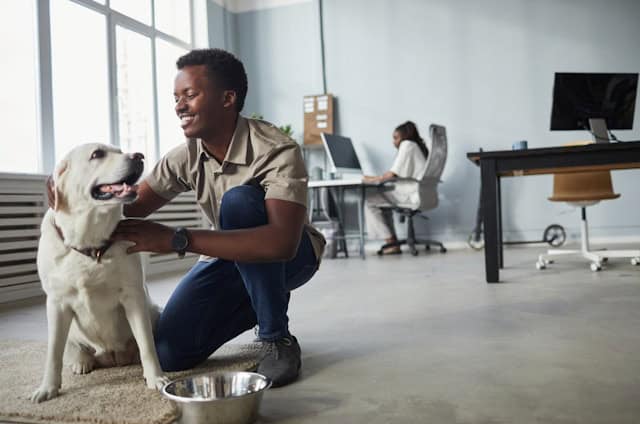
Just like us, dogs feel and behave better when they eat well. Too much filler or junk food can leave a dog sluggish, irritable, or withdrawn, while balanced meals packed with real nutrients bring out their best. I’ve noticed firsthand that Savannah is most loving and attentive when her diet is steady and full of quality options.
Key ways that dog food and feeding habits shape emotional responsiveness:
- Consistent routines foster emotional security. Dogs thrive when meals happen at regular times. A reliable schedule reduces stress and makes dogs more open to connecting with us.
- Balanced nutrition supports brain function. Healthy fats, proteins, and vitamins help regulate mood. Ingredients like omega-3s, for example, can actually boost a dog’s brain health and support a calm, attentive attitude. Popular choices for mental wellness are noted in guides like Best Foods for Dogs’ Mental Health.
- Proper diets prevent mood swings. Feeding your dog a steady diet designed for their age and activity level helps avoid crashes in energy that can look like mood changes or inattentiveness.
- Quality dog food encourages emotional bonding. When Savannah feels her best from the inside out, she’s more eager to interact, train, and share our routine. Good food can equal a more affectionate and in-tune companion.
If you want actionable advice for younger dogs, my favorite place to point new dog owners is the Puppy Nutrition Guide. It lays out meal plans and ingredient tips for building a strong, emotionally balanced puppy from the start.
I always check out dog food reviews before I choose new options for Savannah. Picking the right formula helps her tackle training and family life with clear focus and a gentle spirit.
For those interested in supporting their dog’s brain and mood through food, check out BRAIN HEALTH DRY DOG FOOD (Free Shipping). These specialized foods can make a difference, especially for sensitive breeds or dogs that work closely with you emotionally.
In the end, thoughtful choices in nutrition lay the groundwork for every other connection you share—whether it’s a productive dog obedience training session or just snuggling on the couch. Healthy dogs, fueled by quality food and routine, naturally tune in to our emotions and become better partners in every aspect of life.
Creating an Emotionally Supportive Environment for Your Dog
Dogs can detect your emotions, but they need an environment that helps them feel safe and tuned in. Over time with Savannah, I’ve seen that the smallest routines and daily interactions shape how deeply we connect. From playtime to bedtime, even how I talk to her, each moment is an opportunity to create a space where both of us feel understood and cared for.
Activities and Practices to Foster Connection
Building a true connection with your dog doesn’t happen by accident—it’s woven into your routines, games, and the way you communicate every day.
- Enrichment Games: I love making time for scent games, hide and seek, or puzzle feeders with Savannah. These games keep her mind active and encourage teamwork. A simple game of fetch, practicing recall, or trying nose work games gives dogs a healthy outlet and helps them tune into your emotional state.
- Daily Routines: Dogs thrive on structure. Scheduled walks, regular feeding times, and planned training sessions all build trust. Savannah looks forward to our morning snuggle before breakfast and our evening training time. Routines like these help her feel secure and closer to me.
- Communication Techniques: Simple, consistent cues matter. I use a calm, steady voice when I give commands, and plenty of praise when Savannah engages with me. Using hand signals with spoken words strengthens her understanding, especially on days when my mood might change my tone.
Daily habits are the glue for our relationship. Even a few minutes a day spent gently grooming, practicing “sit” or “stay,” or just relaxing together tells your dog they’re safe and loved. If you want step-by-step guides or more ways to bond with your dog, check out my tips for online dog training. These small, daily efforts make a world of difference in how well your dog senses and responds to your feelings.
Recognizing and Respecting Individual Canine Responses
Every dog is different—what comforts one pup might not work for another. Some breeds are famous for their sensitive nature, but even dogs of the same breed show a wide range of reactions to their owners’ emotions.
With Savannah, I’ve learned to watch her body language closely. When she’s happy, her tail wags and she makes gentle eye contact. If she senses my stress, she tends to check in more or stay nearby. Some dogs may seek space when they’re overwhelmed.
That’s why observation is so important; tuning into your dog’s unique signals is just as valuable as any formal training.
At K9 Nut, I believe in honoring each dog’s individuality. No one-size-fits-all strategy works for every canine or family. My commitment to personalized support starts with asking questions and paying attention—just like I do with Savannah.
If you’re unsure how to spot the small changes in your own dog’s mood or behavior, start with gentle experiments: a quiet stroke, a new game, or a different training approach. Notice what makes your dog relax or perk up. If you need more specific advice, I put together honest dog food reviews and breed-specific tips so you can find what helps your pup thrive.
Supporting your dog’s emotional growth takes time and patience, but the reward is a deeper bond. Every dog can detect emotions differently, so your approach should be as individual as your furry friend.
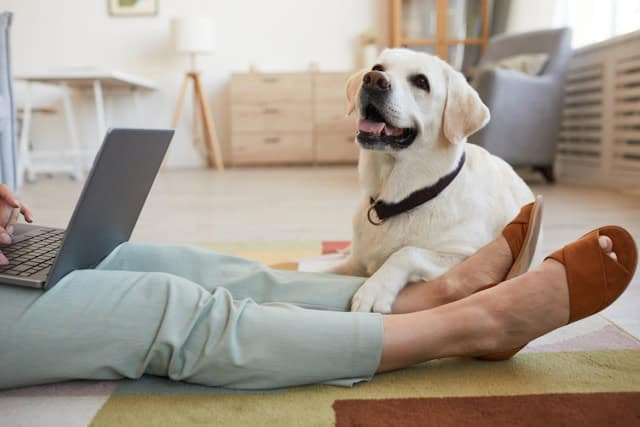
Frequently Asked Questions About Dogs and Emotional Sensitivity
After learning how dogs like Savannah sense our moods, questions naturally come to mind. Here are some of the most common questions I get about canine emotional intelligence. I’ve answered them based on both my experience and up-to-date research, so you feel confident in strengthening your bond with your dog.
Can Dogs Really Detect Every Emotion?
Dogs can sense a wide range of human emotions. Scientific studies show they pick up on happiness, sadness, anger, fear, and even subtle shifts in our mood. Dogs read our facial expressions, body language, and vocal tone—sometimes better than another person would. Each dog is different, though, and things like breed and training level can affect how tuned-in they are. For more on the science, check out the Freshpet article, Can Dogs Sense Human Emotions?.
Why Are Some Dogs More Sensitive Than Others?
Some breeds, like retrievers and collies, are known for their strong emotional connection with people. Other factors include early socialization and positive dog obedience training experiences. Savannah, for example, became more attuned to my feelings as we spent time training together. How you raise, train, and bond with your dog has a big impact on their sensitivity. If you want to see how breed affects these traits, learn more with my insights in the section on Essential Tips for Dachshunds.
Do Changes in Dog Food Affect My Dog’s Mood?
Yes, absolutely. If your dog’s diet changes, you might notice a difference in energy, focus, or even emotional response. Poor-quality food can make a dog sluggish or moody, while well-balanced nutrition often brightens their mood and supports emotional bonding. This connection is one reason I review foods before giving Savannah something new. For more on what ingredients help your pup, see my advice for quality dog food reviews.
Will Dog Obedience Training Strengthen My Dog’s Emotional Connection to Me?
Dog obedience training goes hand-in-hand with emotional intelligence. When you teach a dog to respond to commands, you also teach them to pay attention to your cues—body language, mood, and energy. This ongoing practice has brought Savannah and me closer than ever. Even basic commands, reinforced with patience and praise, make a difference.
Is Online Dog Training Effective for Building Emotional Responsiveness?
Online dog training lets you work with your dog on your own schedule. Many programs focus on reading dogs’ emotions as much as teaching commands. Live feedback and tailored video lessons help you see your dog’s emotional reactions in real time. I find digital options especially helpful for refining techniques and tracking progress at home. For breed-specific examples, you can read about Boxer dog traits and training benefits.
Do All Dog Breeds Sense Emotions Equally?
Every breed has its own strengths when it comes to emotional awareness. Companion breeds are often described as “in tune” with human feelings. Working breeds pick up cues quickly but may focus on tasks, too. Training, environment, and your daily interaction style matter just as much as genetics.
Here are a few ways dog breeds differ in emotional sensitivity:
- Companion breeds: excel at comforting and reading feelings
- Herding breeds: respond quickly to energy changes and tension
- Guard breeds: may be more alert but sometimes less demonstrative
- Mixed breeds: vary by individual traits and upbringing
What Are Signs My Dog Senses My Emotions?
If your dog is tuning in to you, you may notice:
- Staying close when you’re sad or anxious
- Wagging tail and playful energy when you’re happy
- Extra eye contact or gentle nudges when you’re stressed
- Quiet companionship when you need comfort
Savannah, for example, lays her head on my lap when she senses I’m overwhelmed, and she gets extra playful when I’m in good spirits.
How Can I Help My Dog Feel Safe and Emotionally Connected?
Creating routines for feeding, play, and training gives dogs the security they need to open up. Using consistent voice cues and regular affection also builds trust. Every dog, just like every person, needs time and patience to form deep connections.
If you want breed-specific tips, especially for dogs prone to weight gain or emotional sensitivity, see my list of Essential Tips for Dachshunds.
Understanding the question “can dogs detect your emotions” helps you build a meaningful, responsive, and loving relationship with your pup, just like I’ve done with Savannah.
Conclusion
Dogs like Savannah help prove that emotional connection goes far beyond simple commands or daily routines. When you look at the question, can dogs detect your emotions, the answer is clear: our dogs respond to how we feel, shaping every part of our lives together.
Understanding your dog’s emotional intelligence opens up new pathways for successful dog obedience training, meaningful play, and balanced nutrition.
By focusing on quality dog food and choosing breeds that fit your lifestyle, you make it easier for your dog to tap into that natural bond. Thoughtful routines, consistent practice, and the right support make your relationship feel secure and rewarding.
If you want to continue growing with your pup, check out dog food reviews for honest advice or explore online dog training for flexible solutions.
Thank you for joining me and Savannah on this journey. If you have your own stories or want tips on building deeper trust with your dog, share your thoughts below or reach out for guidance. Strong canine bonds start with understanding—and together, we can help every dog feel safe, valued, and truly seen.





